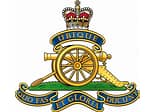This week, we turn our focus to Colonel Alexander Hugh “Sandy” MacGregor, MC, RFD, a figure whose life story embodies bravery, resilience, and an enduring commitment to the well-being of others. Born on 16 March 1940, MacGregor’s distinguished military career and his transformative post-military work have left an indelible mark on both military history and personal development spheres.
The Vietnam War:
Sandy MacGregor’s military journey began with his commission as a captain in the Australian Army, where he quickly established himself as a leader of extraordinary courage and skill. His most renowned contribution came during the Vietnam War, a conflict that tested the mettle of soldiers in ways previously unimaginable. In this arena, MacGregor led the 3 Field Troop engineers on one of the most dangerous missions of the war—exploring the Củ Chi tunnels.
These tunnels were a labyrinth of underground passageways used by the Viet Cong for hiding, communication, and launching surprise attacks. They were heavily booby-trapped and nearly impossible to navigate without succumbing to the dangers within. Yet, MacGregor and his men, known as “tunnel rats,” took on the daunting task of mapping these tunnels. Their work not only revealed the extensive nature of the Viet Cong’s underground operations but also uncovered vital resources that would aid Allied forces in turning the tide of the war.
MacGregor’s leadership during these missions was nothing short of heroic. He led from the front, demonstrating a calm under pressure that inspired his men to follow him into the depths of these deadly tunnels. The risks were immense, but MacGregor’s unflinching courage earned him the Military Cross, a recognition reserved for acts of gallantry in the presence of the enemy. The United States, too, acknowledged his valour with the Bronze Star Medal, underscoring the international significance of his contributions.
Post-Military Life: A Journey of Healing and Empowerment
After the war, MacGregor faced the challenge that many veterans encounter—transitioning from a life defined by combat to one of peace. However, instead of letting the war define him, MacGregor chose a path of healing and empowerment, not just for himself but for others as well.
He channelled his experiences and the lessons learned on the battlefield into a new mission: helping people harness the power of their subconscious minds. Through seminars and motivational speaking, MacGregor taught individuals how to overcome their own fears, doubts, and limitations. His approach was unique in that it drew directly from his military experience, where mental toughness and resilience were as crucial as physical strength.
MacGregor’s teachings resonated deeply with audiences, many of whom faced their own battles, whether personal, professional, or psychological. He emphasized the importance of inner strength, a quality he had relied on during his time in the tunnels of Vietnam and later in his life as he dealt with personal tragedies.
Personal Tragedy and the Power of Forgiveness
Beyond his military and professional accomplishments, MacGregor’s life was also marked by profound personal tragedy. In a heartbreaking event that would test the limits of anyone’s resilience, MacGregor’s three daughters were tragically murdered in 1987. The devastating loss was a turning point in his life, forcing him to confront unimaginable pain.
Remarkably, MacGregor emerged from this tragedy not with bitterness, but with a commitment to forgiveness and healing. He publicly forgave the man responsible for his daughters’ deaths, a decision that was both deeply personal and universally inspiring. This act of forgiveness became a cornerstone of his teachings, demonstrating the incredible power of the human spirit to transcend even the most profound grief.
A Lasting Legacy
Today, Colonel Sandy MacGregor’s legacy is multifaceted. He is remembered as a war hero whose actions saved lives and changed the course of history. But he is also celebrated as a mentor and guide, someone who used his experiences to help others find strength and peace within themselves. His seminars have left a lasting impact on those who have attended, teaching them that the greatest battles are often fought within the mind.
MacGregor’s life is a testament to the power of resilience, not just in the face of external adversities like war, but also in overcoming the internal challenges of grief, fear, and loss. His story is one of courage, not only in combat but in the ongoing journey of personal growth and forgiveness. As we reflect on his contributions, both on the battlefield and beyond, we are reminded that true heroism lies in the ability to rise above adversity and inspire others to do the same.
Colonel Alexander Hugh “Sandy” MacGregor’s story continues to inspire new generations, reminding us all that no matter the challenges we face, we have the power within us to overcome and thrive.









